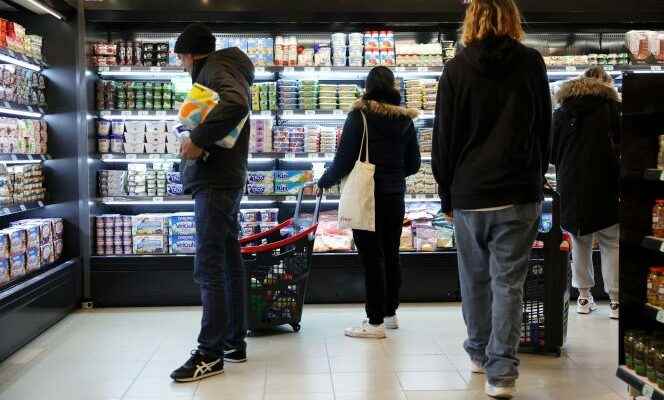“I’ll show you everything I’ve taken from Lidl, and I’ll put the prices right next to you, so you can compare. With inflation, we no longer know where to shop, we no longer know what to take. » “I took those, so they’re short dated. I paid 1.50 euros instead of 2.15 euros. These are big muffins, they are super good. » They call themselves “StellaLK Lifestyle”, “Mamie Vitamine”, “Celine”, “Christie in all simplicity”… And, regularly, from their kitchen or their living room, they film themselves, unpacking the products from their shopping bag in videos entitled “Return from races”, which have thousands of views on YouTube.
These supermarket influencers abound on the Web, since inflation began to eat away at household budgets. They illustrate a key moment in the consumption habits of the French: their massive orientation towards discounts, to maintain their standard of living. And this, through either new stores or their usual low-cost brands.
First there are these Action, Noz, Normal, Stokomani, where “26% of households buy consumer products, especially cleaning, hygiene and beauty products, with brands often imported from Eastern countries, whose label is in a foreign languagenotes Frédéric Valette, director of the distribution department of the Kantar Institute. In 2021, we were only at 22% ”. These networks have more and more new customers, who now come, on average, ” every two months “.
“More diversity in the typology of customers”
Wouter De Backer, Managing Director of Action in France, notes “increased attendance” in its 716 French stores – 2,070 in Europe –, but, “above all, more diversity in the typology of customers”. “Maintenance, household products, cosmetics and storage are the departments where sales are growing. », he says. Its mobile app, which announces promotions, had more than 90,000 downloads three days after its launch in October. In 2021, Action achieved a turnover of 6.8 billion euros in Europe, compared to 5.6 billion euros in 2020, with 12 million customers each week (9 million in 2020).
But this enthusiasm must be put into perspective, underlines Mr. Valette: “These outlets represent, for the moment, only 0.5% of sales of mass consumption products, while they have a considerable weight in textiles, where they absorb 11.9% of sales. And that’s largely thanks to children’s underwear, socks, or pajamas. »
You have 60.93% of this article left to read. The following is for subscribers only.
